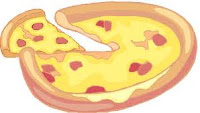In this model, similar types of communication functions are grouped into Layers. There are 7 layers in this Model. Those are,
- Physical Layer
- Data link Layer
- Network Layer
- Transport Layer
- Session Layer
- Presentation Layer
- Application Layer
Each layer helps it's above layer to establish an error free communication, in other words, each layer depends on its below layer to establish an error free communication.
How to remember these names????
Here the order is very important. If anybody asks you about these layers, you should start with Physical and end with Application Layer. You should not jumble these names according to your convenience. So you should remember these names with an order. Well, there are several techniques are there to remember these type of names. One of those technique is, making a funny name or sentence with the STARTING letters. Just, write the starting letters of these layers.
P D N T S P A
Now make a funny sentence, here are some examples
- Please Do Not Touch Steve's Pet Alligator

Or
- Please Do Not Throw Sausage Pizza Away

Now I bet you never going to forget these names and order again :)
Ok, now lets have a look at the Functionalities of these Layers...
- Physical Layer : This is the First or Lowest layer of the OSI model. It takes care about the Physical Connections.
- Data Link Layer : This layer Encodes the data packets and provides error free node to node transmission. It is divided into two sub layers. Those are
- Media Access Control Layer (MAC Sublayer in short)
- It helps the computer to get the access of data transmission
- Logical Link Control Layer (LLC Sublayer in short)
- It controls the order, flow and errors of the frames (Frame synchronization)
- Network Layer : This layer helps in Switching and Routing (connecting and transmitting), and also creates virtual circuits ( Imaginary paths for transmission)
- Transport Layer : This layer helps in providing Transparent data transmission. Its also checks whether the data completely transmitted or not.
- Session Layer : This layer is responsible for the Transmission Sessions. I mean Starting, Maintaining and Terminating the Communication.
- Presentation Layer : This layer provides the data Independence ( simply you can remember that this layer is responsible for the data Presentation :) I mean, how you are presenting data (without any leakage)
- Application Layer : This is the topmost layer, this layer directly interacts with the end user. This layer is responsible for checking whether the claimed user is genuine or not.
Still having problems with these functions??? Have a look at the following diagram. It will be easier for you to understand :)
Very good. Now you know about the OSI model and It's Layers :) You know that it was developed by ISO.
Hey, you know one secret? ISO dint invent any new model. It just COPIED some old model and modified it.. Thats all.
Once there was a model called TCP/IP model (Transport Control Protocol / Internet Protocol) with this name itself, you can define its functionality :) It has lil complicated structure with only 4 Layers. Those are
- Network Interface Layer
- Internet Layer
- Transport Layer
- Application Layer
ISO Just elaborated this model and divided some of these layers into EXTRA LAYERS and developed OSI model. have a look at the following Diagram, so that you can understand the difference :)
Thats all for now friends. Happy reading...



No comments:
Post a Comment